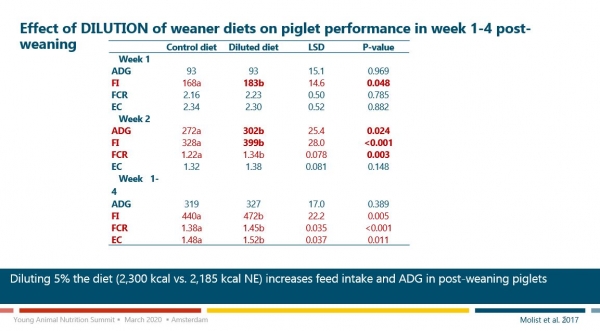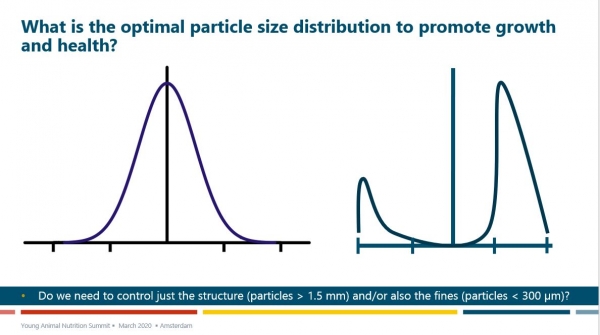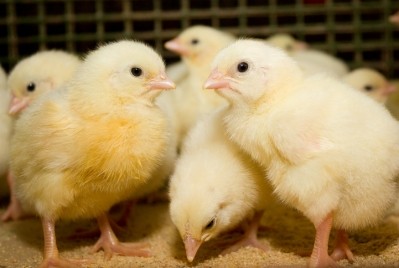Structure needs to be built into piglet feed formulations

In an ideal situation, this structure should come from fiber by-products, as they are low in energy and have a bulk effect, he said.
He was speaking at the FeedNavigator Summit 2020: Young Animal Nutrition (YAN20) last month in Amsterdam.
In immature animals, in the absence of antimicrobial growth promoters and zinc oxide (ZnO), any substrate that enters the gastrointestinal tract (GIT), and is available for bacteria, needs to be controlled, said Molist.
Piglets need to grow but it is critical to avoid overfeeding them. Excess nutrients raise the risk of Streptococcus suis, a significant pathogen of swine and one of the most important causes of bacterial mortality in piglets after weaning.
Diluted diets
Diluting the diets, mainly in Kcal and not in SID Lys, and/or increasing stomach retention time can play an important role in limiting excess non-digested nutrients in the GIT.
To enhance stomach retention in piglets, structure - bigger particles – is needed in the diet – at least 15% of the particles should be greater than 1.5mm in size, he said. Nutritionists should measure particle size and discuss the results with the production manager, said Molist.
It is better to get the structure into the piglet diet from inert fiber, ingredients such as wheat, oat hulls and sunflower hulls. Such inert fiber sources will reduce the retention time for the intestinal contents, will modify the intestinal ecosystem, and, in that way, will reduce the proliferation of pathogenic bacteria in the large intestine, he said.
But cereals can also bring structure - barley is a good candidate in this respect, added Molist.
Lower pH
Molist cited a study by Bornhorst et al., 2013 that showed structure in the piglet diet resulted in a lower pH specially in the distal parts of the stomach. Lower pH is required for the efficient digestion of plant- and animal-derived proteins found in most post-weaning diets.
Piglets younger than 60 days old have difficulties to acidify the stomach pH, he said. Coarse I-CHO particles can help the piglets to develop the stomach and to reduce the stomach pH, said Molist.
Research by Koop et al 2013, he said, showed that feeding the diets as coarse mash resulted in lower stomach pH than fine pellet. S. Derby was was reduced when piglets received a coarse mash diet and S. suis did not survive in the stomach content.










